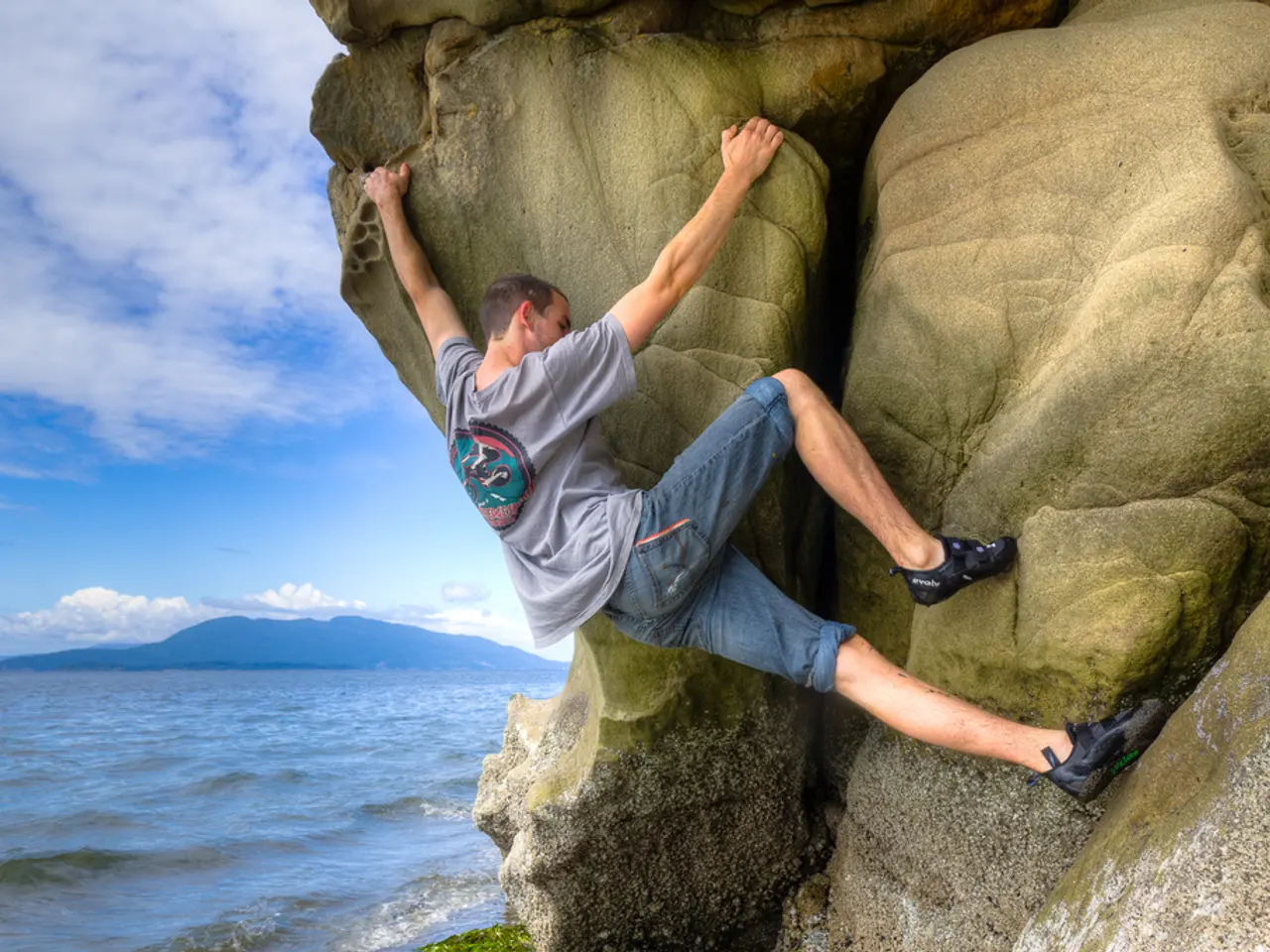Explore Turkey's most picturesque mountain climbing routes, divided by regions
Turkey's Climbing Hotspots: A Guide for Adventure Seekers
Turkey, with its diverse geography, offers a wealth of climbing opportunities for enthusiasts. From the volcanic peaks of Tendurek Mountain in Van to the limestone walls of Narlidere in Bursa, there's a climbing experience for every level.
Volcanic Adventures in Tendurek Mountain
Tendurek Mountain, located in Van, boasts two volcanic peaks, a crater lake, and thermal vents, signs of continued underground activity. Climbers here traverse volcanic debris and geothermal fields. The last eruption occurred in 1855, making it a fascinating destination for those seeking a unique climbing experience.
Palandoken Mountain: A Winter Playground
Palandoken Mountain in Erzurum reaches 3,271 meters. In summer, climbers ascend via the same paths used by skiers during winter. The Buyukejder summit includes a ski lift and a cafe during winter months. Winter climbs require technical experience and gear.
Sport Climbing Across Turkey
The Mediterranean (Antalya-Geyikbayırı) and Aegean (Datça, Bafa, İzmir coast) regions are the most famous for sport climbing routes. Some of the most popular routes include Çığlık, Junimond, Lycian Highway, Turkish Standard, Rocket Man, and Freedom Is a Battle, all located in and around Geyikbayırı.
The Central Anatolia and Eastern Anatolia regions also offer climbing, though they are less internationally famous. Notable climbing spots include Pelitözü - Gölpazarı, Geyve, Kaynaklar, Kemaliye, and Gargasuyu.
The Marmara region is represented by Ballıkayalar near Istanbul. The Kaçkar Mountains are more known for traditional alpine climbing and trekking.
Unexplored Terrain and Rugged Peaks
Medetsiz (Bolkar) in the Mersin-Konya-Nigde region is yet to be fully developed but offers potential for new climbing terrain. Climbers in the Central Anatolian Plateau can find rugged volcanic peaks and granite outcrops, ideal for those seeking altitude, solitude, and wide views.
Ice Climbing in Erzurum
Uludag in Bursa reaches 2,543 meters and serves as a year-round destination for skiing and climbing. Karakaya, located in Eskisehir, includes 20 to 25-meter granite cliffs, suitable for those seeking short, steep routes. Climbers should avoid peak sunlight hours due to the dry climate.
Eastern Anatolia often encounters snow, ice, and unpredictable weather. Yet, those who prepare well can experience Turkey's most dramatic climbs.
Advanced Climbing in Antalya
Citdibi in Antalya offers steep limestone and minimal shade, appealing to advanced climbers seeking difficult climbs in isolation. Olympos, another Antalya location, blends coastal views, forest trails, and archaeological remains, with 400 routes for climbing.
Bouldering at Bafa Lake
Bafa Lake in Mugla caters to boulder climbers and beginners, with large granite and gneiss rocks surrounding the lake.
Ice Climbing in Erzurum
Uzundere Ice Climbing in Erzurum supports ice climbing on frozen waterfalls between January and March. Routes vary from 25 to 300 meters in height. The International Ice Climbing Festival takes place here every winter. In warmer months, climbers also practice on rock walls.
Exploring Turkey's Mountain Ranges
From the limestone cliffs of Ballikayalar Canyon in Kocaeli to the 3,550-meter Artos Mountain in Van, offering views of Akdamar Island, Turkey's mountain climbing routes cater to a wide range of interests and skill levels.
Golpazari in Bilecik offers over 200 routes on limestone surfaces. Erciyes Mountain in Kayseri, the tallest mountain in Central Anatolia, features twin summits and visible lava formations. Climbers usually ascend in one day between June and October.
The Mercan (Munzur) Mountains in Tunceli include Akbaba Peak at 3,463 meters. The region falls within the Munzur Valley National Park. Suphan Mountain in Bitlis-Van reaches 4,058 meters. Climbers pass lava domes and glacier lakes while ascending.
Cilo Mountain in Hakkari contains several summits, including Uludoruk at 4,135 meters. The mountain became a national park in 2020. Climbers must remain aware of avalanche conditions, especially in winter.
The Kackar Mountains in Rize lie in the northeastern part of the country. These peaks rise above the Black Sea coast and support year-round alpine activity. Thick fog, glacial terrain, and isolated villages define the area. The highest summit reaches 3,937 meters. Climbers often use the southern approach. Northern routes feature ice and demand alpine experience.
Finally, Mount Ararat (Agri Dagi) in Agri stands at 5,137 meters, the highest elevation in Turkey. Its summit remains covered in ice. Climbers often take guided tours starting from Dogubeyazit. The south route serves as the standard approach, while the northern side includes glacier climbs. Summer is the only season for legal and safe ascents.
Sports enthusiasts may want to explore the ice climbing opportunities in Erzurum, particularly in Uzundere Ice Climbing, which offers ice climbing on frozen waterfalls between January and March, with routes varying from 25 to 300 meters in height. The International Ice Climbing Festival takes place here every winter.Travelers seeking a unique Turkish lifestyle experience might enjoy bouldering at Bafa Lake in Mugla, where large granite and gneiss rocks surround the lake, catering to boulder climbers and beginners.Outdoor enthusiasts planning a visit to Turkey should not miss the opportunity to explore Istanbul's vibrant economy and diverse lifestyle, and possibly take a break from climbing to enjoy the city's sports scene, as Istanbul is home to several professional sports teams in football, basketball, and more.For those looking to expand their extreme sports portfolio, the 'turkish' economy has recently seen investments in ski resorts and winter sports facilities, positioning Turkey as a promising winter travel destination for adventure-seeking tourists. For example, Palandoken Mountain in Erzurum offers winter climbs requiring technical experience and gear, as well as a ski lift and cafe during winter months.




